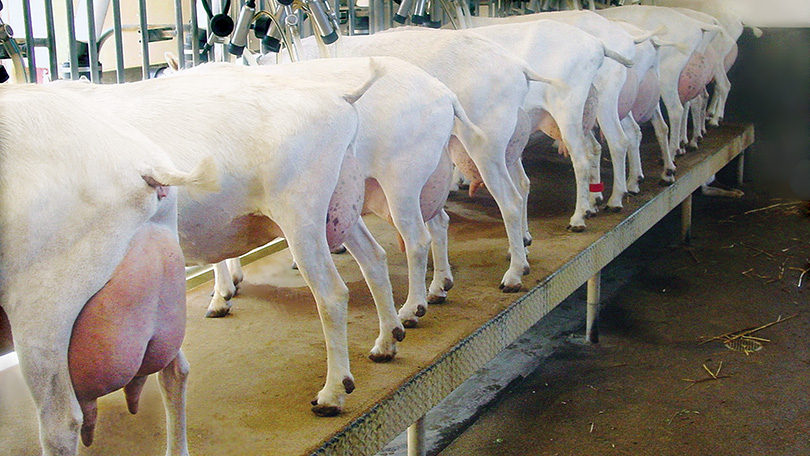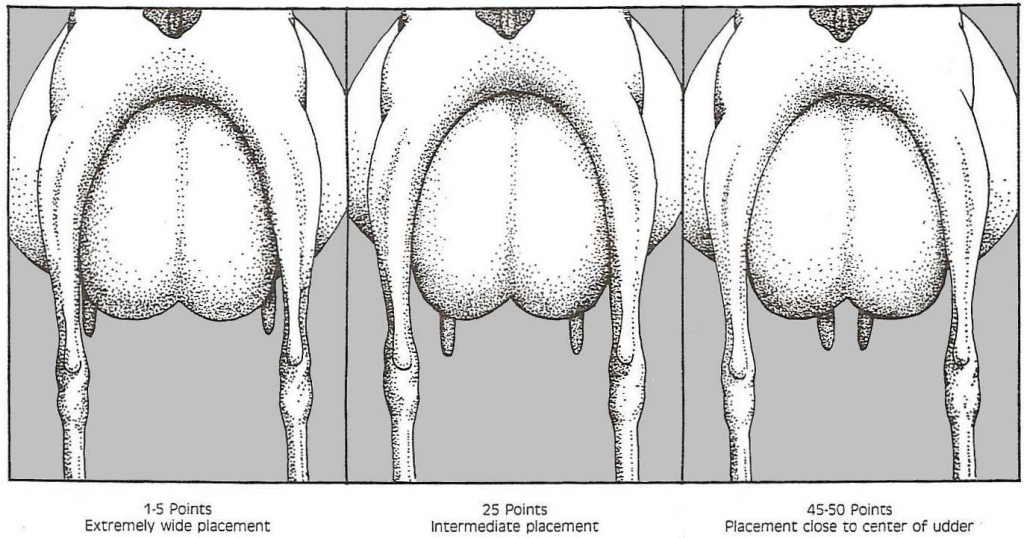ADGA’s Linear Appraisal Program
ADGA’s Linear Appraisal Program
https://adga.org/seeing-a-dairy-goat-by-the-numbers/

ADGA’s linear appraisal program evaluates individual type traits that affect structural and functional durability. This allows users of the program to take full advantage of the potential for genetic improvement through selective breeding. The program provides the framework for a uniform accurate record system that can be used in:
- Making farm management decisions
- Educational programs and research, including the genetic evaluation of does and sires
- Breed association(s)
- Promotion and sale of animals
- Visualizing an animal “by the numbers”
The term “linear” means that a scale is used to describe the biological range of each of the traits. That scale ranges from 0-50 for each trait. With the exception of stature and rump width, a linear trait score is an observation made by a trained appraiser rather than an actual measurement.
Traits are evaluated by the appraiser without regard for age, stage of lactation, farm management or environmental conditions. The biological traits used in the linear appraisal program are believed to have economic importance either in terms of increased longevity, which reduces culling rate, or increased production. The traits exhibit enough variation to provide a basis for selection in breeding decisions.
The traits are also heritable (genetically-controlled) enough so that progress or improvement can be made at an acceptable rate through the selection of sires.
When a breeder has become familiar with the linear appraisal system, it is possible to get a visualization or “mental picture” of an animal based entirely on examining the linear scores. Many of us use photographs to help us consider and choose animals we may wish to utilize in a breeding program. However, for a number of reasons, photographs may not provide the accurate, unbiased picture we are seeking.
The linear appraisal program does not set a certain point on a range of points on the scale for a linear trait as “ideal,” nor are more points, fewer points, or midpoint on the range for a trait necessarily more desirable. The program is designed, instead, to objectively assess the condition of a trait that a sire passes on to his offspring. To provide an example of how this visualization might work, we will examine two udder traits: rear udder arch and teat placement.
FIGURE 1: REAR UDDER ARCH

Rear udder arch (RUA) is evaluated by the appraiser as the shape at the top of the rear udder where the milk is carried.
FIGURE 2: TEAT PLACEMENT
Teat placement (TP) is determined by observing where the center of the teat meets the udder floor.
In evaluating the linear scores of your own animals, or, perhaps, those in the pedigree of an animal you are considering as a herd sire, it is important to know the range of the trait, the heritability of the trait, the breed average for the trait, and the trait scores of the animals you are considering as possible genetic resources.
(credit for pictures and information goes to ADGA)
When looking at a buck’s type evaluation (not his own linear history) we can see the average scores of his daughters as well as the reliability of the scores. Reliability is based on the number of daughters appraised, number of appraisals, number of different herds and areas of the country where daughters were appraised. Bucks that have been used extensively will have higher reliability than those that are younger or have seen more limited use.
Each of us has preferences regarding how we want our does to look. Prior to a linear appraisal session, each herd owner is provided with a document illustrating the range for each linear trait. Comparing your doe’s scores with the illustrations will give you a better understanding of where that animal falls within the range. Being able to “visualize” an animal based on the linear trait scores provides us with an objective, unbiased tool. The ability to visualize where we are and where we want to go in our breeding program with respect to the linear traits helps us make progress toward breeding a dairy goat that is sound and productive.
[Information contained in this article is derived from the Performance Programs materials developed and copyrighted by the American Dairy Goat Association)



Powered by Boutique Store Builder . Web Design by Avalon Rose Design.


